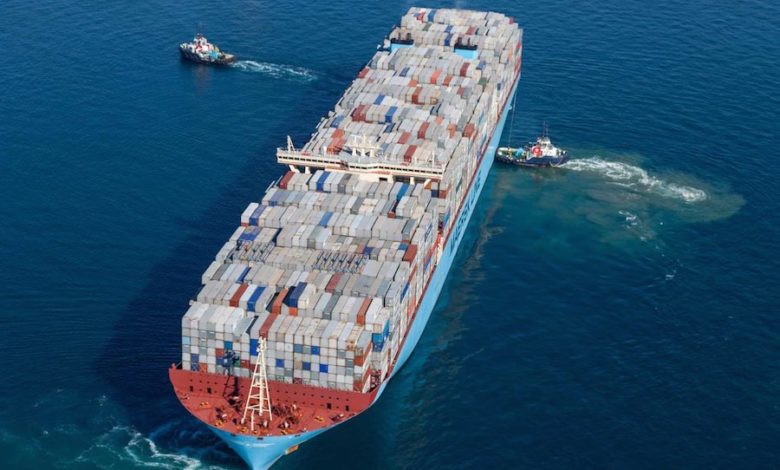A.P. Møller-Mærsk splits in two

As expected Europe’s largest maritime conglomerate will split in two. A.P. Møller-Mærsk will divide its energy and transport divisions in arguably the greatest shake up in its more than 100-year history.
“The Board of Directors expect that the oil and oil related businesses in A.P. Møller-Mærsk A/S will require different solutions for future development including separation of entities individually or in combination from A.P. Møller-Mærsk A/S in the form of joint-ventures, mergers or listing. Depending on market development and structural opportunities, the objective is to find solutions for the oil and oil related businesses within 24 months,” the Danish company said in a statement today.
Chairman of the board, Michael Pram Rasmussen says: “The industries in which we are operating are very different, and both face very different underlying fundamentals and competitive environments. Separating our transport and logistics businesses and our oil and oil related businesses into two independent divisions will enable both to focus on their respective markets. This will increase the strategic flexibility by enhancing synergies between businesses in transport and logistics, while ensuring the agility to pursue individual strategic solutions for the oil and oil related businesses”.
Transport & Logistics will consist of Maersk Line, APM Terminals, Damco, Svitzer and Maersk Container Industry based on a one company structure with multiple brands.
“Maersk Line will grow market share organically and through acquisitions,” the company said in a release.
Energy, meanwhile, will consist of Maersk Oil, Maersk Drilling, Maersk Supply Service and Maersk Tankers.
“Long term growth in energy demand and sharp reductions in investments in the global E&P industry in recent years, leading to an expected reduction in oil supply in the coming years provide opportunities to grow Maersk Oil based on the company’s key technical competencies. Maersk Oil will adjust its current strategy to focus its portfolio in fewer geographies to gain scale in basins, particularly in the North Sea, where it can leverage its strong capabilities within subsurface modelling, well technology and efficient operations. Maersk Oil will aim to strengthen its portfolio through acquisitions or mergers,” the company said in a release.
Additional investments in the group’s offshore service businesses and Maersk Tankers will be limited.
Søren Skou will continue as group CEO of A.P. Møller-Mærsk and CEO of the Transport & Logistics division.
Claus V. Hemmingsen will be appointed group vice CEO of A.P. Møller-Mærsk effective on 1 October 2016 and CEO for the Energy division.
There’s plenty more management changes too in the offing.
The new CEO of APM Terminals will be Morten Engelstoft, currently CEO of APM Shipping Services and CEO of Maersk Tankers. Engelstoft’s appointment is effective November 1, 2016.
Kim Fejfer, currently CEO of APM Terminals and Executive Board member in the Maersk Group, will take up a new role related to A.P. Møller Holding.
The new CEO of Maersk Oil will be Gretchen Watkins, current COO in Maersk Oil. Watkins will take up the role as CEO of Maersk Oil effective October 1 2016. Jakob Bo Thomasen has decided to leave Maersk Oil after 27 years with the Maersk Group, the last seven of which as CEO of Maersk Oil.
Jørn Madsen has been appointed CEO of Maersk Drilling. Madsen is currently CEO of Maersk Supply Service a role he has held since 2015. He will assume his new position after a replacement is named as CEO of Maersk Supply Service.
Elsewhere, Christian M. Ingerslev has been appointed CEO of Maersk Tankers taking effect as of November 1 2016. Ingerslev has since 2014 been CCO of Maersk Tankers.
